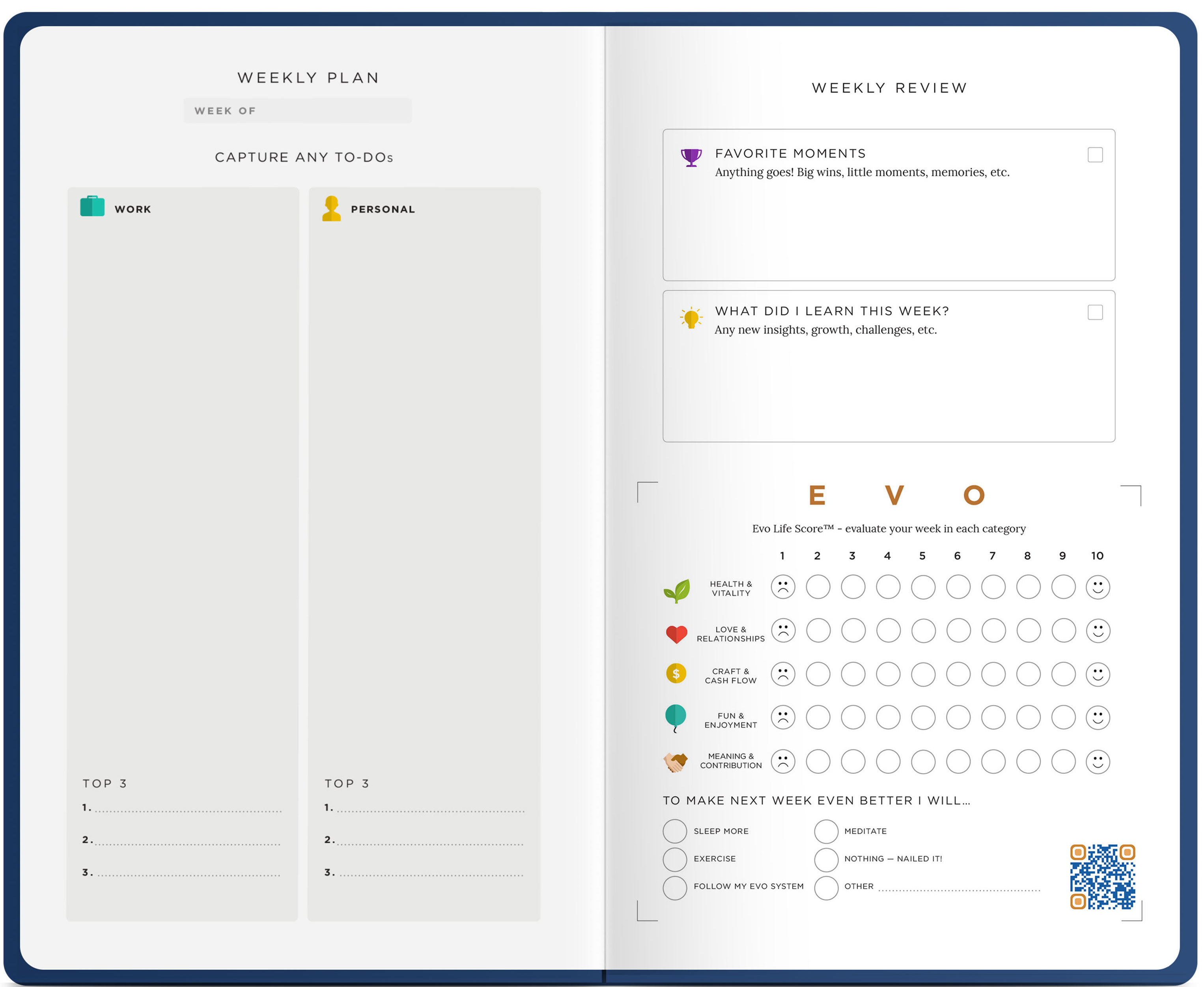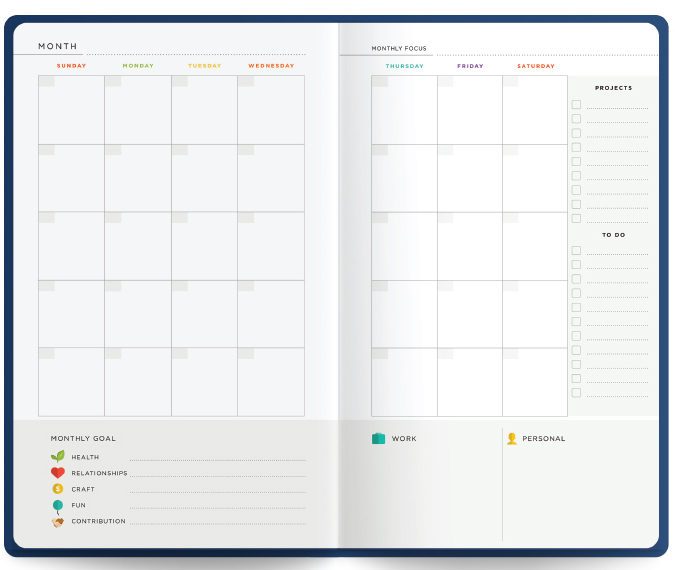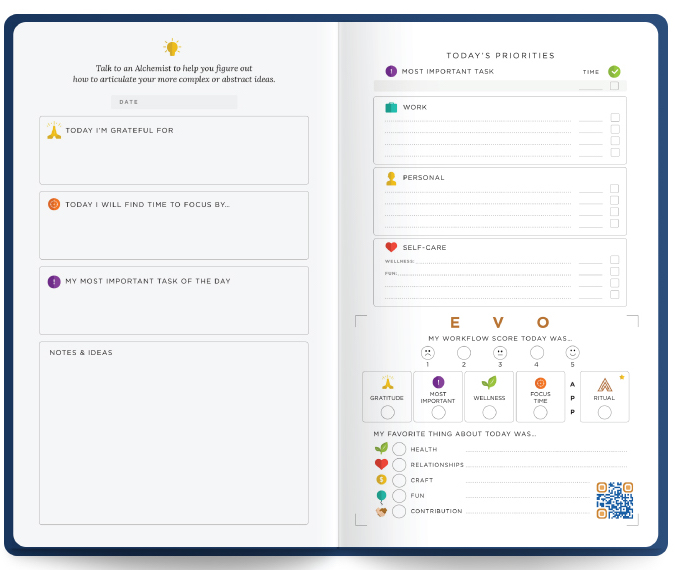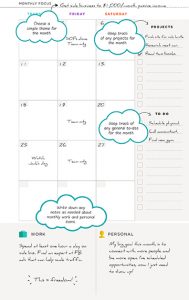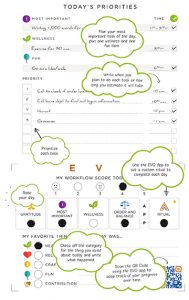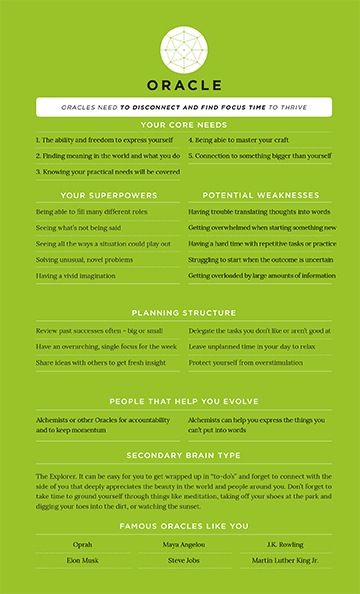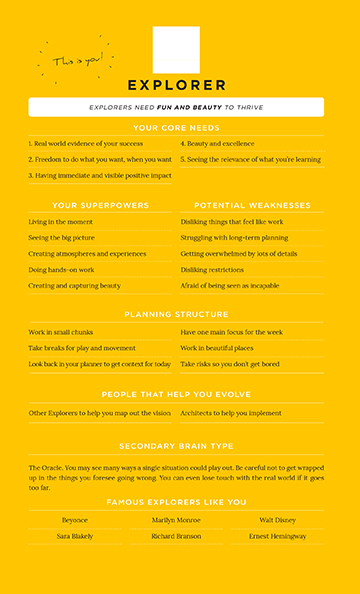BLOG
a
The Anatomy of Your EVO Type, Part II: Understanding Balance & Your Compasses
by Iris Strauss
6280 views

Photo by Aaron Burden on Unsplash
This is part of a four-part series to help you understand why we present your EVO Elements Assessment results the way we do. Make sure you read all four parts in order to understand the structure of how your Elements fit together, and the reasoning behind that structure.
This article will focus mainly on Compass Elements—Brain Type Elements will be up next in Part III! 🙂
Let’s take some time to understand how your whole EVO Element “recipe” is presented, and why… Keeping in mind the two key aspects of the Balance Principle (which we went over in depth in Part I of this series):
- Everyone (barring serious mental disorders or disabilities) uses every kind of process—or, everyone is a little bit of everything. Meaning, we have each type of Compass (logically-oriented, and gut instincts-oriented), each type of Brain Type (concrete-focused, and abstract-focused), and everyone has to have a preference for how they interact with others and the external world, as well as how they personally think, feel, and perceive their internal world. See the chart below for a visual reference.
- Balance. EVO Elements and their relationship to each other always represent balance in each aspect of the categories described above—abstract/concrete, logic/gut instincts, internal/external.
Let’s also take a moment to remember how each Element is defined:

Rather than looking at each of these eight Elements as singular processes in a bucket, from which we can pick and choose—a more accurate representation is to think of each process as part of a set… A pair, representing the yin and yang of each aspect of who you are. Because each process is actually linked to another process inherently—like two sides of the same coin.
This means there are two sets of Compasses that are inherently linked, and two sets of Brain Types that are inherently linked.
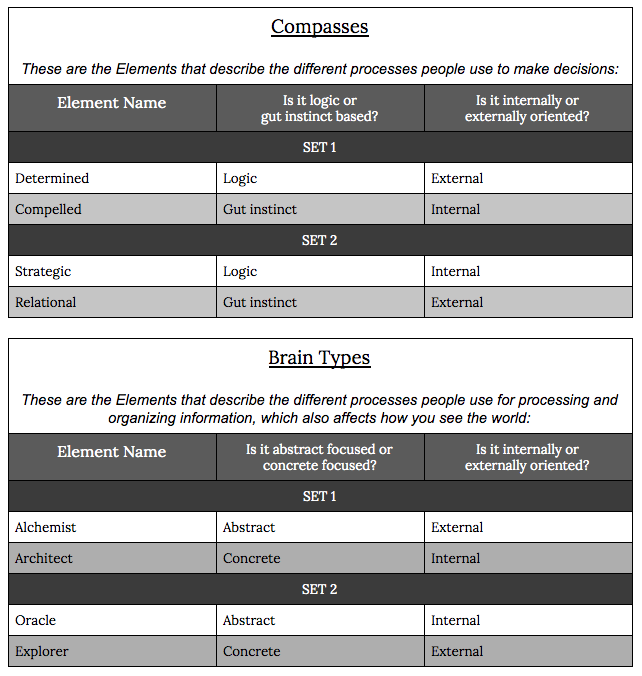
Notice that each Element set represents all the facets of each of the processing styles we’re covering (in the second and third columns of the charts above)… Each Brain Type Element is either abstract or concrete and internal or external, and the other Element that it’s linked to represent the other aspects of the Brain Type process. The same goes for Compasses.
The reason being, you can’t have a set of Elements that’s overly focused on one thing—for example, pairing Oracle and Alchemist together doesn’t work, because both are abstract. You also don’t see Alchemist and Explorer paired together, because although one is abstract and one is concrete, both are Elements external. Explorer and Oracle are paired together the way Alchemist and Architect are paired together in order to explain an individual’s preference for each of these aspects. Even if someone is very abstract and very external, they still have to have some default method for processing concrete information and processing in an internal way.
We’ll take a deeper look at this with a concrete example using Compasses in a minute.
But first, know that when we say preference in this context, it’s important to understand that we’re talking about the kind of preference you might ascribe to being right handed or left handed… It’s not that we’re faced with all of these options and then decide to use the ones we like better—these are innate preferences that we’re either born with or are ingrained in us from a very young age.
You see, each Element is meant to be a definition for innate processes people already use and already have preferences for, whether they know it and use these definitions or not. Elements are a system of language to use to describe innate preferences for processes we use, and our ideal way to use them, in order to be the best version of who we already are.
But you still may be asking… “Why? I understand that theoretically, people need to have balance, but what does that actually mean in a practical sense?” Of course it isn’t enough to say that this is how things work without any reasoning behind it. So, let’s dive deeper…
Let’s imagine a person without balance in even one of these Element aspects… Take Compass pairs, for example.
Let’s say there was a person who was purely logical, without any regard or ability for values-based, gut-instinct decisions. Someone who was both Strategic and Determined, without being either Relational or Compelled.
While this person would have a great instinct for making logical, objective decisions, they would be completely paralyzed when faced with the prospect of a decision that is completely personal in nature… What they’d like to eat, what sort of person they might want to date, what shirt to put on in the morning, what video game they want to play, who they want to be friends with…
Of course, they could try making pro and con lists and try to make every decision based on what seems objectively “better,” but that falls apart when two or more options are all objectively and equally good on paper…
Say you’re at a taco place, and every type of taco is the same price—which type of taco should you get? Or, you have 3 shirts that are exactly the same style, cut, and fit, but which color do you want to wear? You could go out with two people who tick all the “right” boxes, but who are you more attracted to?
None of these questions has an answer that is objectively correct… It all boils down to—what do you want? What feels right? What are you drawn to, and why?
These scenarios are overly simplified and may seem trivial, but the principle also holds true for bigger decisions—like who you want as a life partner, what type of work you want to do, where you want to spend your money, which elected official you’ll vote for, where you’ll live… etc. While some may put more emphasis on logic over gut-instinct, their gut-instinct must still be present to fill in the gaps. Balance.
And of course, others rely more on their gut-instincts, and use their logical framework to understand and inform their preferences. But balance goes both ways. Trying to rely on gut-instinct alone isn’t enough either.
Doing whatever feels right to us with no regard for what makes logical sense would probably leave us in heaps of frivolous debt, jobless, in extremely poor health entirely by our own fault, and without relationships of any kind, because other people would be completely turned off by our inability to consider the consequences of our actions or make logical choices that are beneficial for ourselves and those around us.
Those who rely more on gut-instincts and put more emphasis on what aligns with their preferences and values still have to think about how to budget their time, energy, and resources and sometimes make decisions they don’t necessarily like, in order to be able to have what they want in the long run. A process for making logical decisions is needed to balance out our gut instincts.
Everyone has to have both kinds of Compass in order to function effectively… Gut instinct and logic. And one of those has to be able to be used quickly, in the moment, likely based on external factors dealing with or accounting for other people (externally-oriented). While the other process you use is going to be better for long-term consideration, when you have time to go away by yourself and deeply consider the situation at hand, and how you personally factor into the situation (internally-oriented).
And in order to make the best choice possible, you’ll probably use a combination of whichever set of Compass Elements you use…
(Relational and Strategic) OR (Compelled and Determined)
Each pair of these Elements is like a coin, and the Elements in each set represents the two sides of the “coin” of an individual’s decision-making process. This describes the balance we need so we can function as the best version of our true selves.
Up next, we’ll go more into why it’s necessary to have both Elements found in each set of Brain Types. Read Part III here.
